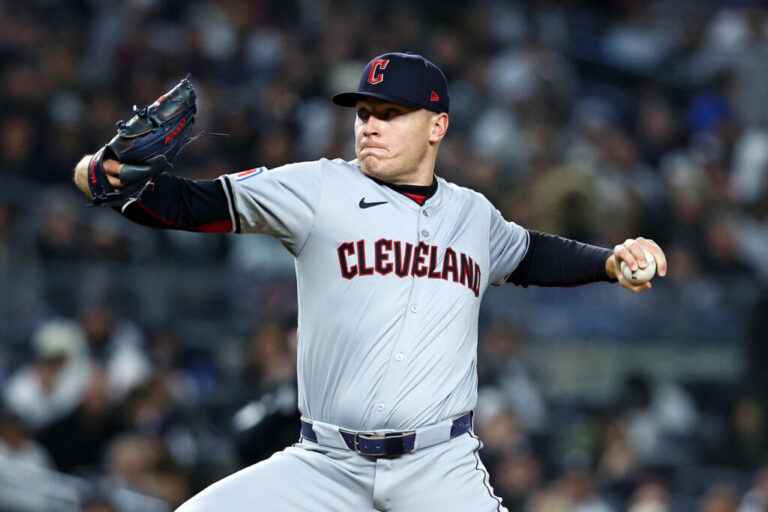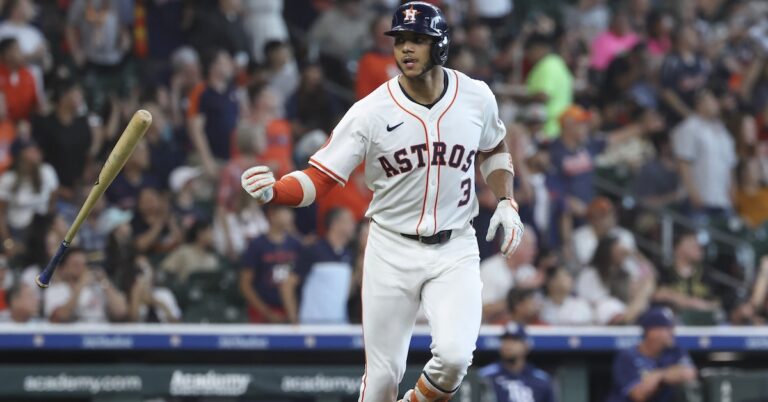
7:17pm: There’s an opt-out after the second season, according to ESPN’s Jeff Passan (X link). Passan confirms the Mets view Holmes as a starter.
7:15pm; It’s a three-year deal with a guarantee around $38MM, Sherman reports (on X).
7:12pm: The Mets are in agreement with righty Clay Holmes, reports Joel Sherman of the New York Post (X link). The deal is pending a physical. Sherman reported earlier this week that the Mets were considering Holmes as a rotation option. He’s been a full-time reliever since his 2018 rookie season.
Holmes heads across town after three and a half seasons in the Bronx. Holmes was an inconsistent pitcher for the Pirates between 2018-21. The Yankees were intrigued by his gaudy ground-ball rates and acquired him at the 2021 trade deadline. That move wasn’t met with a ton of fanfare at the time, but Holmes broke out immediately after donning pinstripes.
Owner of a 4.93 earned run average at the time of the trade, Holmes fired 28 innings of 1.61 ERA ball to kick off his Yankees career. He took over as Aaron Boone’s closer by the following season. Holmes saved 20 games with a 2.54 ERA across 63 2/3 innings to earn his first All-Star nod in 2022. He was again selected to the Midsummer Classic in a ’23 season that saw him rattle off 63 frames of 2.86 ERA ball while picking up 24 saves.
Holmes got out to another strong start this year. He didn’t allow an earned run over 13 1/3 innings through the end of April. Holmes had a productive May as well, though he started to struggle with his command. That was a sign of a somewhat rocky summer. Holmes posted a 3.64 ERA in 30 appearances between the start of June and the end of August. While his rate production wasn’t terrible, he relinquished a lot of leads. By the start of September, the Yankees had replaced him in the ninth inning with Luke Weaver. Holmes finished the season in a setup role.
The 6’5″ righty finished the regular season with a 3.14 ERA across 67 innings. He struck out around a quarter of batters faced against a league average 8.1% walk rate. Holmes got grounders at a characteristically excellent 65% clip. It’s far from a bad season, but he was bizarrely prone to blowing leads. While he recorded a career-high 30 saves, he was charged with an MLB-worst 13 blown save chances. No other reliever gave up more than eight leads. He went into the postseason trending in the wrong direction after losing the closing job.
To his credit, Holmes rebounded when the lights were brightest. He only gave up three runs in 12 postseason innings. While he’d fallen behind Weaver in the bullpen hierarchy, he remained one of Boone’s most trusted setup options. Holmes picked up five holds without giving up the lead once in October.
That finish was a more fitting ending to his strong run in the Bronx. While the fanbase was divided at times on his reliability, Holmes posted good to elite numbers throughout his Yankee tenure. Of the 86 relievers with at least 150 innings over the past three years, Holmes ranks 17th in ERA. While his 25.7% strikeout percentage is middle of the pack, his 68.6% ground-ball rate is #1 among that group.
There’s no doubt that Holmes can be a productive reliever. The Mets believe he can be more than that. They’ll give him a chance at a full-time rotation role for the first time in his MLB career. Holmes has started four major league games, all of which came during his 2018 rookie season in Pittsburgh. Those didn’t go well — he allowed a 7.80 ERA with more walks than strikeouts in 15 innings — but that’s of little consequence to today’s decision. The Mets aren’t placing any stock in a minuscule sample that predated his breakout by three years.
Like many MLB relievers, Holmes was a starting pitcher in the minors. He’s not completely unfamiliar with working multiple innings, but it’ll be a tough test against big league hitters. He’ll probably need to make an adjustment to his pitch mix. Holmes has essentially abandoned his changeup since moving to the bullpen. His 96-97 MPH sinker is his go-to offering, the pitch most responsible for his huge grounder rates. Holmes has deployed two distinct breaking balls — an 87 MPH slider and an 83-84 MPH offering that Statcast clarifies as a sweeper.
Having three pitches is an advantage as Holmes tries to navigate a lineup two or three times in an appearance. However, he hasn’t used a changeup or splitter that most starters use to handle opposite-handed hitters. Holmes has fared reasonably well against hitters of either handedness, but his strikeout and walk profile is far better when he holds the platoon advantage. As a Yankee, Holmes held right-handed batters to a pitiful .203/.267/.284 batting line. He struck them out at a huge 31.7% clip against a tidy 6.2% walk rate. He fanned only 19.8% of left-handed opponents while issuing walks at a 9.8% clip. Holmes still held lefties to a mediocre .235/.318/.307 slash, but that’ll present more of a challenge as he works through a lineup multiple times.
There’s significant upside if Holmes can make that transition. Reliever to rotation success stories have gotten increasingly common. Seth Lugo, Reynaldo López, Garrett Crochet and Holmes’ former teammate Michael King have become top-of-the-rotation starters after spending most of their careers in relief. Jeffrey Springs, José Soriano and Zack Littell look like mid-rotation arms. It hasn’t been uniformly positive, though. Jordan Hicks wore down quickly when the Giants tried him as a starter last season. The Marlins’ experimented with A.J. Puk in the rotation. They pulled the plug by the end of April after he had four terrible starts.
Puk moved back to the bullpen with relative ease after the rotation experiment flopped. That’s a possibility for Holmes as well. The Mets surely believe he could return to a setup role in front of Edwin Díaz if he doesn’t take to the rotation. They’d be paying a high but not outlandish price for a leverage reliever in that case. Robert Stephenson, Rafael Montero and Taylor Rogers have signed three-year deals in the $33-35MM range in recent years. The Braves guaranteed López $30MM to give him a shot as a starter. Hicks, who is younger than the rest of that group, signed a four-year deal worth $44MM.
More to come.





